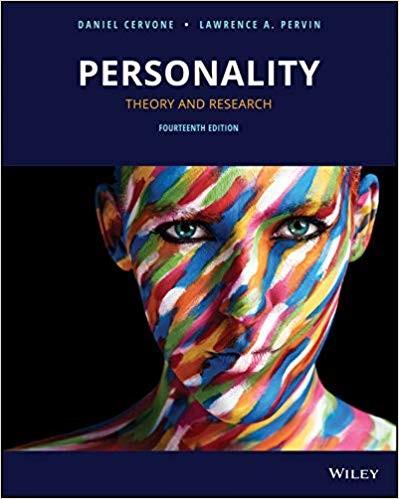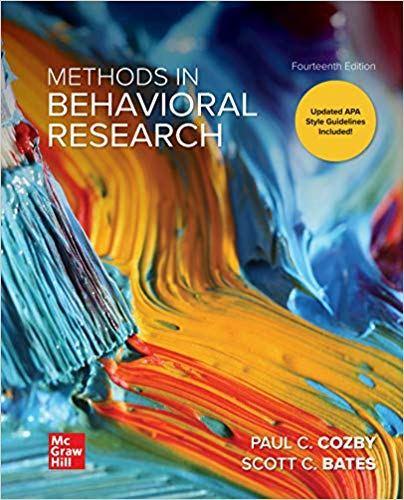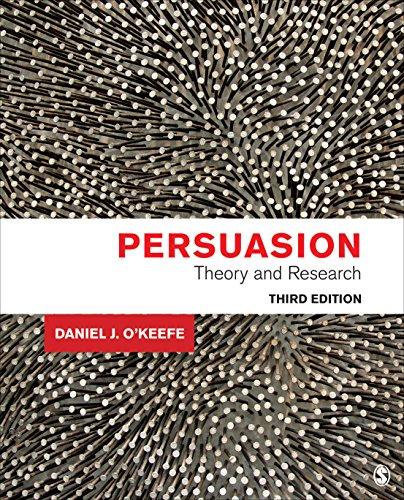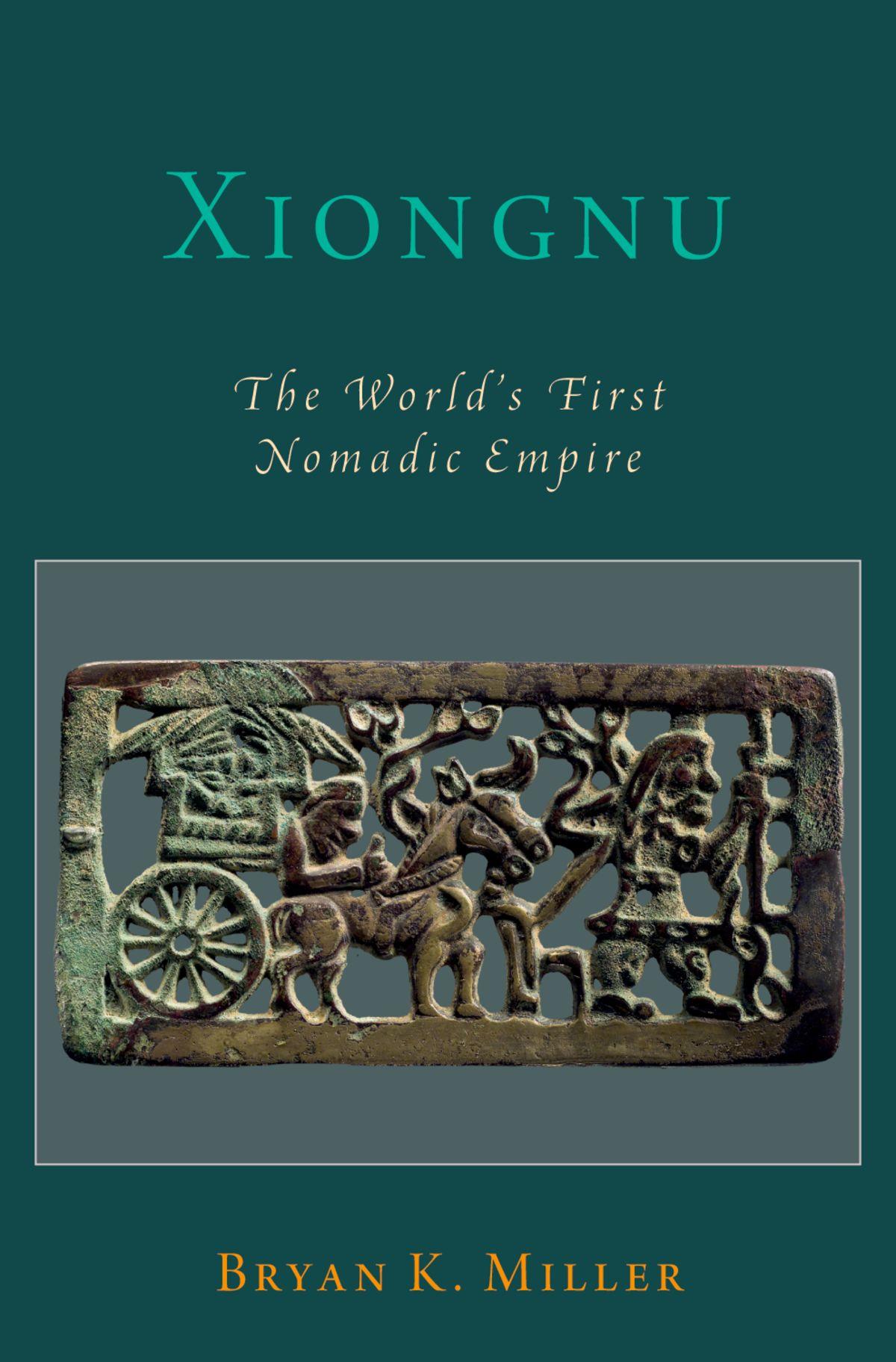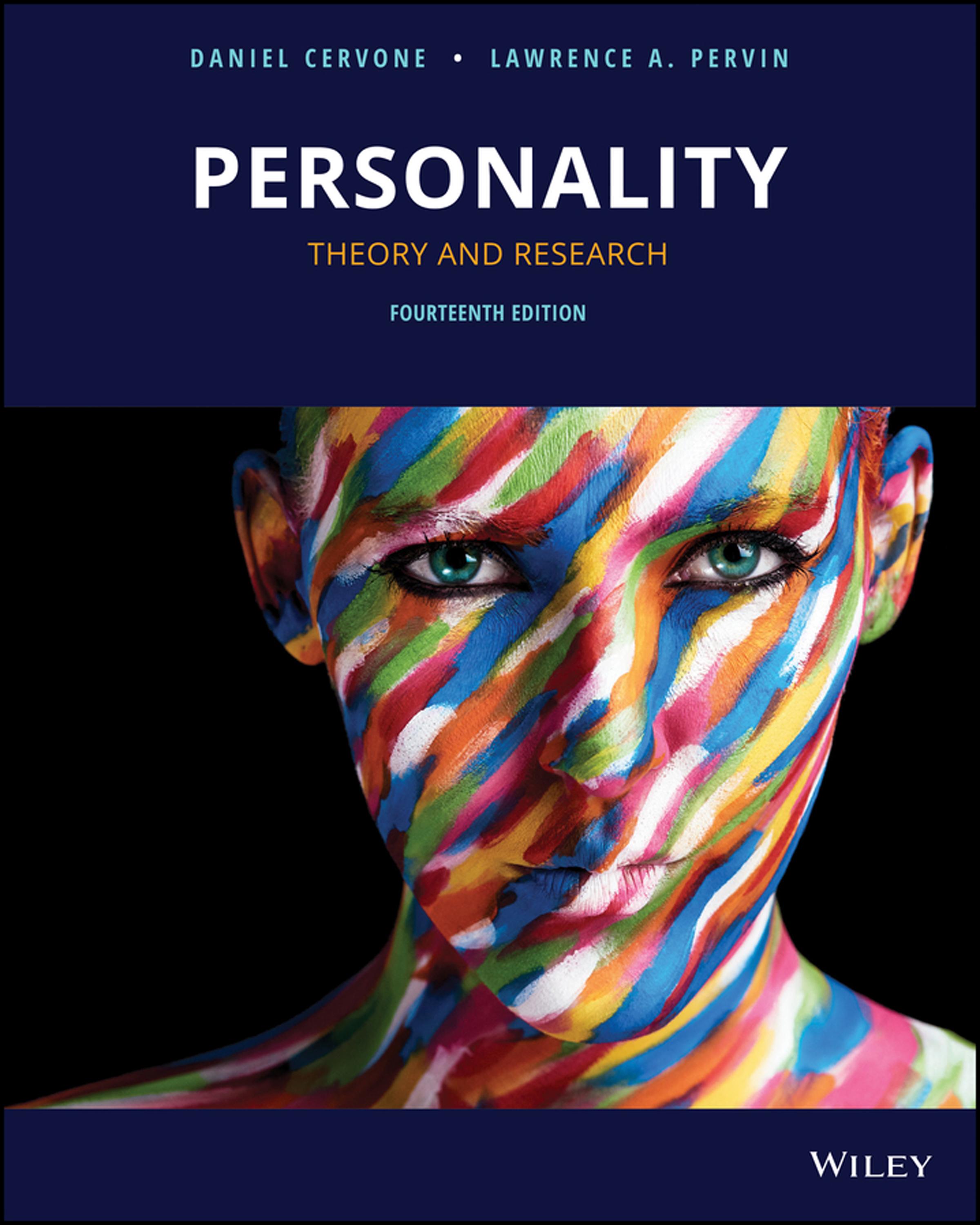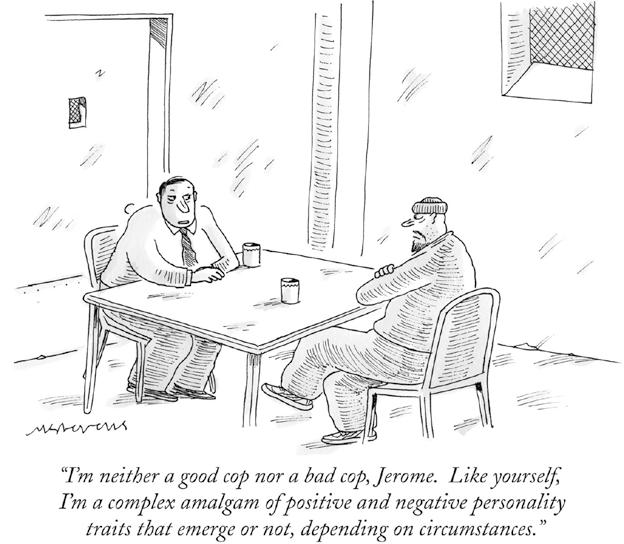(eBookPDF)Personality:TheoryandResearch,14th Edition
https://ebookmass.com/product/ebook-pdf-personality-theoryand-research-14th-edition/
Instant digital products (PDF, ePub, MOBI) ready for you
Download now and discover formats that fit your needs...
(eBook PDF) Methods in Behavioral Research 14th Edition
https://ebookmass.com/product/ebook-pdf-methods-in-behavioralresearch-14th-edition/
ebookmass.com
Effective Group Discussion: Theory and Practice 14th Edition, (Ebook PDF)
https://ebookmass.com/product/effective-group-discussion-theory-andpractice-14th-edition-ebook-pdf/
ebookmass.com
Persuasion: Theory and Research Third Edition – Ebook PDF Version
https://ebookmass.com/product/persuasion-theory-and-research-thirdedition-ebook-pdf-version/
ebookmass.com
Physics I: 501 Practice Problems For Dummies The Experts At Dummies
https://ebookmass.com/product/physics-i-501-practice-problems-fordummies-the-experts-at-dummies/
ebookmass.com
Xiongnu, the World’s First Nomadic Empire Bryan K. Miller
https://ebookmass.com/product/xiongnu-the-worlds-first-nomadic-empirebryan-k-miller/
ebookmass.com
Learning Disabilities Sourcebook 6th Edition Angela L. Williams
https://ebookmass.com/product/learning-disabilities-sourcebook-6thedition-angela-l-williams/
ebookmass.com
New Media in the Margins: Lived Realities and Experiences from the Malaysian Peripheries Benjamin Yh Loh
https://ebookmass.com/product/new-media-in-the-margins-livedrealities-and-experiences-from-the-malaysian-peripheries-benjamin-yhloh/
ebookmass.com
Solution Manual for Managerial Accounting for Managers 5th Edition by Eric Noreen
https://ebookmass.com/product/solution-manual-for-managerialaccounting-for-managers-5th-edition-by-eric-noreen/
ebookmass.com
Canu2019t Hurt Me: Master Your Mind and Defy the Odds
https://ebookmass.com/product/cant-hurt-me-master-your-mind-and-defythe-odds/
ebookmass.com
in Personality Theory. The intellectual activity that is personality theory did not cease at the close of the millennium. Investigators continue to pursue the challenges that motived the Grand Theorists of the 20th century. Four such developments are found in within coverage of the four theoretical perspectives that receive multi-chapter coverage in the text: psychodynamic theory, phenomenological theory, trait theory, and social-cognitive theory. The four 21st-century theories that are included were selected not only “on their own merits” but also because each addresses limitations in 20th-century theorizing in a particularly direct manner. The Contemporary Developments in Personality Theory material thus is another opportunity for students to think critically. Readers are encouraged to consider limitations in prior theorizing as a prelude to the coverage of new developments.
In addition, Chapter 2 (The Scientific Study of People) contains a section on Contemporary Developments in Personality Research. Readers learn about computerized text analysis methods through which researchers infer personality characteristics by analyzing spontaneous language use in social media.
Finally, material that previously appeared in print in Chapter 15, Assessing Personality Theory and Research, has been moved to the online Instructor Companion Site at www.wiley.com/go/ cervone/personality14e. Because that material is a reflection on prior chapters and the state of the professional field, it is not absolutely necessary for understanding the personality theory and research covered in Chapters 1–14. Nonetheless, highly engaged students may wish to revisit topics, contemplate the field, and consider ways in which they themselves can advance it by reading Chapter 15 online.
Professor Pervin and I always hoped that Personality: Theory and Research will enable students to appreciate the scientific and practical value of systematic theorizing about the individual, to understand how evidence from case studies and empirical research informs the development of personality theories, and to discover a particular theory of personality that makes personal sense to them and is useful in their own lives.
ACKNOWLEDGMENTS
I thank the Psychology staff at John Wiley & Sons not only for their continued support but also for their suggestions that have strengthened the text. I am also grateful to many students and instructors who have sent me questions and suggestions for future coverage; feel free to keep sending them to dcervone@uic.edu.
I also thank Dr. Walter D. Scott, of Washington State University, for giving permission to include the case study that appears in Chapter 14. Dr. Scott was the therapist for the case, whose assessment tools and case report were prepared collaboratively by Dr. Scott and the author.
I am particularly grateful to Professor Tracy L. Caldwell of Dominican University. Dr. Caldwell prepared the extensive set of supplementary material available at the book’s Instructor Companion Site at www.wiley.com/go/cervone/personality14e, suggested the “toolkit” metaphor that appears in Chapter 1, and has provided invaluable input on both science and pedagogy that has strengthened this text across multiple editions.
Daniel Cervone
Professor of Psychology, University of Illinois at Chicago
Preface iv
1 Personality Theory: From Everyday Observations to Systematic Theories 1
Questions to be Addressed in this Chapter, 2
Defining Personality, 3
Why Study Personality?, 4
Three Goals for the Personality Theorist, 5
Answering Questions about Persons Scientifically: Understanding Structures, Processes, Development, and Therapeutic Change, 8
Important Issues in Personality Theory, 15
Evaluating Personality Theories, 21
The Personality Theories: An Introduction, 22
Major Concepts, 25 Review, 25
2 The Scientific Study of People 27
Questions to be Addressed in this Chapter, 28
The Data of Personality Psychology, 29
Contemporary Developments in Personality Research: Social Media and Language-Based Assessments 30
Goals of Research: Reliability, Validity, Ethical Behavior, 37
Three General Strategies of Research, 39
Personality Theory and Personality Research, 50
Personality Assessment and the Case of Jim, 51
Major Concepts, 52 Review, 52
3 A Psychodynamic Theory: Freud’s Psychoanalytic Theory of Personality 53
Questions to be Addressed in this Chapter, 54
Sigmund Freud (1856–1939): A View of the Theorist, 54
Freud’s View of the Person, 56
Freud’s View of the Science of Personality, 60
Freud’s Psychoanalytic Theory of Personality, 60
Major Concepts, 84 Review, 84
7 Trait Theories of Personality: Allport, Eysenck, and Cattell 180
Questions to be Addressed in this Chapter, 181
A View of the Trait Theorists, 182
Trait Theory’s View of the Person, 182
Trait Theory’s View of the Science of Personality, 183
Trait Theories of Personality: Basic Perspectives Shared by Trait Theorists, 185
The Trait Theory of Gordon W. Allport (1897–1967), 186
Identifying Primary Trait Dimensions: Factor Analysis, 189
The Factor-Analytic Trait Theory of Raymond B. Cattell (1905–1998), 191
The Three-factor Theory of Hans J. Eysenck (1916–1997), 195
Major Concepts, 204 Review, 204
8 Trait Theory: The Five-Factor Model and Contemporary Developments 205
Questions to be Addressed in this Chapter, 206 On Taxonomies of Personality, 206
The Five-Factor Model of Personality: Research Evidence, 207
Five-Factor Theory, 218
Maybe We Missed One? The Six-Factor Model, 220
Cross-cultural Research: Are the Big Five Dimensions Universal?, 221 Contemporary Developments in Trait Theory: Reinforcement Sensitivity Theory, 224
The Case of Jim—Factor-Analytic Trait-Based Assessment, 230
The Person-Situation Controversy, 233
Critical Evaluation, 236
Major Concepts, 240 Review, 240
9 Biological Foundations of Personality 241
Questions to be Addressed in this Chapter, 242 Temperament, 243
Evolution, Evolutionary Psychology, and Personality, 248
Genes and Personality, 255
Mood, Emotion, and the Brain, 266
Plasticity: Biology as Both Cause and Effect, 270
Neuroscientific Investigations of “Higher-Level” Psychological Functions, 271 Summary, 272
Major Concepts, 272 Review, 272
10 Behaviorism and The Learning Approaches To Personality 273
Questions to be Addressed in this Chapter, 274 Behaviorism’s View of the Person, 274 Behaviorism’s View of the Science of Personality, 275 Watson, Pavlov, and Classical Conditioning, 278
Skinner’s Theory of Operant Conditioning, 288 Critical Evaluation, 297 Major Concepts, 300 Review, 300
11 A Cognitive Theory: George A. Kelly’s Personal Construct Theory of Personality 301
Questions to be Addressed in this Chapter, 302 George A. Kelly (1905–1966): A View of the Theorist, 303 Kelly’s View of the Science of Personality, 304 Kelly’s View of the Person, 306
The Personality Theory of George A. Kelly, 307 Clinical Applications, 320
The Case of Jim, 322 Related Points of View and Recent Developments, 324 Critical Evaluation, 325 Major Concepts, 328 Review, 329
12 Social-Cognitive Theory: Bandura and Mischel 330
Questions to be Addressed in this Chapter, 331 Relating Social-Cognitive Theory to the Previous Theories, 331 A View of the Theorists, 332
Social-Cognitive Theory’s View of the Person, 335
Social-Cognitive Theory’s View of the Science of Personality, 335
Social-Cognitive Theory of Personality: Structure, 335
Social-Cognitive Theory of Personality: Process, 344
Social-Cognitive Theory of Growth and Development, 349 Major Concepts, 360 Review, 360
13 Social-Cognitive Theory: Applications, Related Theoretical Conceptions, and Contemporary Developments 362
Questions to be Addressed in this Chapter, 363 Cognitive Components of Personality: Beliefs, Goals, and Evaluative Standards, 363
1
Questions to be Addressed in this Chapter
Defining Personality
Why Study Personality?
Three Goals for the Personality Theorist
Answering Questions about Persons Scientifically: Understanding Structures, Processes, Development, and Therapeutic Change
Important Issues in Personality Theory
Evaluating Personality Theories
The Personality Theories: An Introduction
Major Concepts
Review
Chapter Focus
I can be selfish, but I believe it is because I try to be perfect. Perfect in the sense I want to be an “A” student, a good mother, a loving wife, an excellent employee, a nourishing friend. My significant other thinks I try too hard to be “Mother Teresa” at times—not that that is a bad thing. But I can drive myself insane at times. I have led a hard childhood and adulthood life; therefore I believe I am trying to make up for all the bad times. I want to be productive, good—make a difference in my world. I’m a real jackass. I’m intelligent enough to do well in school and study genetics but have no idea when to shut up. I often am very offensive and use quite abrasive language, although I’m shy most of the time and talk to few people. I’m sarcastic, cruel, and pompous at times. Yet I’ve been told that I’m kind and sweet; this may be true, but only to those I deem worthy of speaking to with some frequency. I’m very fond of arguing and pretty much argue for fun.
I have always been described by others as cynical and/or as having integrity. I would describe myself as inquisitive, philosophical and justice-oriented. I craze organization,
but my room is the messiest one I have seen thus far … like the room of a toddler. I am introspective but I don’t reach many conclusions about myself. I seem very passive and mellow – but I am just too tired to get fired up.
This person is shy at times. They tend to open up to some people. You never know when they’re happy or sad. They never show their real feelings, and when they do it’s so hard for them. They did have a trauma experience that closed them up—where they seem to be afraid to let their real self show. They are funny and do have a lot of fun and are fun to be around, but at times it’s hard to know if they’re really having a good time. The person is loved by a lot of people and is an extremely giving person but doesn’t like “seriousness.”
These sketches were written by people just like you: students beginning a course on the psychology of personality. When I teach the class, on Day 1, I ask people to describe their personality and that of a friend. Two things happen. First, students can answer the question; when asked to “describe your personality,” they rarely say “I don’t know how to do that; it’s only the first day of personality class.” Second, as you see here, their answers are often detailed, nuanced, and insightful—so much so that one is tempted to ask: Is the class filled with personality theorists?
In a sense, it is. We’re all personality theorists. We ask about ourselves and others: “Why am I so shy?” “Why are my parents so weird?” “Am I so shy because my parents are so weird?” Even before taking a personality class, we devise answers that are sophisticated and often accurate. You already hold ideas about personality and put them to work to understand the events of your day, to anticipate the events of your next day, and to help yourself and your friends handle the stresses, bumps, and bruises of life.
“But”—you may be asking yourself—“if I already know so much about personality, what will I learn in this class? In other words, “What is the professional personality psychologist doing that I’m not doing already?” This chapter addresses this question by introducing the scientific goals and methods of psychologists who study personality. But first, we will define our key term and comment on the status of this scientific field.
Questions to be Addressed in this Chapter
1. How do scientific theories of personality differ from the ideas about persons that you develop in your daily life?
2. Why is there more than one personality theory and in what general ways do the theories differ?
3. What are personality psychologists trying to accomplish; in other words, what aspects of persons and individual differences are they trying to understand and what factors are so important that they must be addressed in any personality theory?
make otherwise mundane tasks meaningful; self-doubts that undermine efforts to achieve these goals—these and more are the features of mental life targeted by the personality psychologist.
A technical term—used in the quote above, from the personality psychologist Jack Block—for this scientific target is “intraindividual functioning”. Personality psychology is not only concerned with differences between people or interindividual differences. Personality psychologists are fundamentally concerned with the interplay of thoughts and emotions within the mind or intraindividual mental functioning.
Many branches of psychology study mental life. What’s unique about personality psychology? One distinctive feature is the field’s concern with how multiple aspects of mental life are connected to one another or “cohere” (Block, 1992; Cervone & Shoda, 1999). Compare this interest to the primary interests in other branches of psychology. A cognitive psychologist may study memory. A social psychologist may study self-concept. An educational psychologist might address perfectionistic tendencies at school. But the personality psychologist is concerned with how these distinct systems cohere in the life of an individual. You just saw such personality coherence in the opening quote above; the person’s memory (of a hard life) was connected to her self-concept (being a productive person who makes a difference to the world), which, in turn, explained her perfectionism (“striving to be perfect”).
A useful concept to describe these connections is “system”. A system is any connected set of interacting parts that comprise whole. Personality can be thought of as a system. Distinct psychological qualities—beliefs, values, emotions, goals, skills, memories—influence one another and comprise the person as a whole (Mischel & Shoda, 1995; Nowak, Vallacher, & Zochowski, 2005)
We now are in a position to define personality. In psychology, personality refers to psychological systems that contribute to an individual’s enduring and distinctive patterns of experience and behavior. As you can see, the definition combines the two meanings above. Ideally, the personality psychologist will be able to identify psychological systems (aspects of inner mental life) that help to explain people’s distinctive experiences and actions (their dispositions).
Why Study Personality?
Why take a course in personality? One way to answer this question is to compare the material in this course with other courses in psychology. Consider intro psych—the typical Psych 101. Students are sometimes disappointed with its content. The course does not seem to be about whole, intact people. Instead, one learns about parts of people (e.g., the visual system, the autonomic nervous system, long-term memory, etc.) and some of the things people do (learning, problemsolving, decision-making, etc.). “Where in psychology,” one reasonably might ask, “does one learn about the whole, intact person?” The answer is here, in personality psychology. Personality theorists address the total person, trying to understand how different aspects of an individual’s psychological life are related to each other and relate also to the society and culture in which the person lives (Magnusson, 2012). One reason for studying personality psychology, then, is that it addresses psychology’s most complex and interesting topic: the whole, integrated, coherent, unique individual.
Another reason is the impact of personality psychology on the wider intellectual world. Personality theories have been influential not only within scientific psychology. They also have influenced society at large. In fact, they have been so influential that they probably have affected your thinking even before you enrolled in this course. Have you ever said that someone has a big “ego”? Or called a friend an “introvert”? Or asked whether a slip-of-the-tongue reveals
something about the hidden beliefs of the speaker? If so, you were already using terms and ideas that come from personality psychology.
Here are three indications of the influence of personality psychology:
• At the end of the 20th century, scholars (Haggbloom et al., 2002) identified the most influential scientific psychologists of the 20th century. Who made the list? In the top 25, the majority were investigators who contributed to the psychology of personality.
• The end of the century was also the end of the millennium. A television network polled historians and others to determine the 100 most influential people—of any sort—of the past 1000 years. The only psychologist to make the list—and easily, at #12—was a personality theorist: the psychodynamic theorist, Sigmund Freud (A & E’s Biography: 100 Most Influential People of the Millennium https://wmich.edu/mus-gened/mus150/biography100.html).
• In 2007, a statistical analysis identified the highest-impact book authors in the humanities or social sciences (fields including not only psychology, but also political science, philosophy, linguistics, literary criticism, sociology, and cultural studies). The singularly most-cited living author was a personality theorist: the social cognitive theorist Albert Bandura (https:// www.timeshighereducation.com/news/most-cited-authors-of-books-in-the-humanities2007/405956.article).
Here, in personality theory and research, you will find the most influential ideas in the history of the psychological sciences.
Three Goals for the Personality Theorist
Now let’s return to an earlier question: What is the professional personality psychologist doing that you, the reader, are not?
Consider what you do. You interact—in person and electronically—with friends and family. You observe people not only in person, but also in movies and videos, and (through writing) in books, magazines, and blogs. You think about yourself: your strengths and weaknesses, hopes and plans, and responsibilities to others. And you learn how others do these same things, when they tell you about themselves, their friends and families, and their hopes and dreams. Somehow, from this everyday observations, you develop thoughts about human nature and the main ways that people differ from one another.
For most people, that is plenty of thinking about personality. But personality psychologists are not “most people.” Psychologists who study personality pursue three goals that distinguish their activities from the nonprofessional who is interested in persons.
1. Scientific Observation
Personality psychologists do not observe people casually. Instead, they pursue scientific observation. The features that make observations “scientific” vary from one science to another. In personality psychology, three stand out:
1. Study diverse groups of people. Psychologists cannot base personality theories merely on observations of people they happen to run into in daily life. They must observe diverse groups of individuals, to ensure that conclusions about personality represent the lives the world’s citizens. This need is particularly critical because people from different nations and cultures may differ in ways that become apparent only once they are studied within their specific life contexts (Cheng, Wang, & Golden, 2011). Not only nations and cultures, but
2. Scientific Theory
The fundamental goal of science is to explain events (Salmon, 1989). Scientists develop explanatory frameworks—that is, theories—to explain their scientific observations. What exactly is a scientific theory? The word “theory” can be used in different ways. For example, you might say that you “have a theory that my friend Liliana is anxious because she’s really attracted to some guy and hasn’t told him.” Even if you are right, your idea about Liliana is not, in and of itself, a scientific theory of Liliana’s personality. Scientific theories of personality have three distinctive qualities; they are systematic, testable, and comprehensive.
1. Systematic. As we have noted, you already have developed lots of different ideas about different people. But you probably have not gone to the trouble of relating all of them to one another. Suppose that on one you say “Liliana is anxious because she’s really attracted to some guy and hasn’t told him” and on another you say “My mother gets anxious all the time; she must have inherited it.” If so, you usually do not have to relate the statements to each other; people don’t force you to explain why one case had an interpersonal cause (relationship breakup) and another had a biological cause (inherited tendencies). But personality psychologists must relate all their ideas to one another, to create a systematically organized theory.
2. Testable. If you tell a friend “My parents are weird,” your friend is not likely to say “Prove it!” But the scientific community says “Prove it!” any time a scientist says anything. The personality psychologist must develop theoretical ideas that can be tested by objective scientific evidence. This is true of any science, of course. But in personality psychology, attaining the goal of a testable theory can be particularly difficult. This is because the field’s subject matter includes features of mental life—goals, dreams, wishes, impulses, conflicts, emotions, unconscious mental defenses—that are enormously complex and inherently difficult to study scientifically.
3. Comprehensive. Suppose that you have just rented an apartment and are considering inviting in a roommate to share rent costs. When deciding who to invite, you might ask yourself questions about their personalities: Are they fun loving? Conscientious? Openminded? And so forth. Yet there also are a lot of other questions that you do not have to ask: If they are fun loving, is it primarily because they inherited this quality or learned it? If they are conscientious now, are they likely to be more or less conscientious 20 years from now? When thinking about persons, you can be selective, asking some questions and ignoring others. But a personality theory must be comprehensive, addressing all significant questions about personality functioning, development, and individual differences. This is what distinguishes personality theory from theorizing in most other branches of psychology. The personality theorist cannot be satisfied with studying “parts” of persons. The personality theorist is charged with comprehensively understanding the person as a whole.
3. Applications: From Observation and Theory to Practice
As the quotes from students that open this chapter make clear, people formulate insightful ideas about personality prior to studying personality psychology. Yet, in everyday life, people rarely convert their personal insights into systematic applications. You may recognize that one friend’s problem is a lack of self-confidence and that another’s is an inability to open up emotionally. Yet, after realizing this, you probably don’t design therapies to boost people’s confidence in themselves or enable them to open up. Personality psychologists, however, do this. They aim not
only to develop testable, systematic theory but also to convert their theoretical ideas into beneficial applications.
In fact, many of the personality theorists you will learn about in this book did not start out in personality psychology. Instead, they often first worked as counselors, clinical psychologists, or physicians. Their personality theories were efforts to understand why their clients were experiencing psychological distress and how that distress could be reduced.
In summary, personality psychologists aim to (1) to observe people scientifically, (2) develop theories that are systematic, testable, and comprehensive, and (3) to turn their research findings and theoretical conceptions into practical applications. It is these goals that distinguish the work of the personality psychologist from that of the poet, the playwright, the pop psychologist—or the student writing personality sketches on the first day of class. Lots of people develop insightful ideas about the human condition. But the personality psychologist is uniquely charged with organizing theoretical ideas into comprehensive, testable, and practical theories.
Throughout this book, we evaluate the personality theories by judging how well they achieve these goals. This book’s final chapter, a commentary on the current state of the field that can be found on the text’s companion website www.wiley.com/college/cervone, judges how successful the field of personality psychology as a whole has been in achieving these five aims.
Answering Questions about Persons Scientifically: Understanding Structures, Processes, Development, and Therapeutic Change
Personality psychologist addresses four distinct topics; in other words, there are four issues that every personality theory must address. We can introduce them with a simple “mental experiment”.
Think of someone you know well, for example, a good friend or family member. Two things you know for sure are:
1. Whatever the individual’s personality is like today, it likely was similar last month and last year, and likely will be similar next month and next year. You might say that personality is “stable” over time.
2. Despite this stability in personality, the individual’s thoughts, feelings, and actions also change. Sometimes they are happy and other times sad. Sometimes they are in control of their emotions and sometimes they “fly off the handle.”
Two things you do not know absolutely for sure, but that probably think are correct, are:
3. If you saw the person when they were a toddler or a grade schooler, their personality would not be the same as it is now. Their personality likely has changed, or “developed,” over time.
4. If the person suddenly experiences a period of psychological distress—for example, a period of depression or anxiety—they probably could “bounce back” from this. In fact, there might be something you could do to improve the person’s psychological well-being.
These four points correspond directly to the topics addressed by personality psychologists. The psychologist introduces formal scientific terms to describe the topics, but the topics themselves are fundamentally the same. They are: (1) personality structure—the enduring “building blocks” of personality; (2) personality process—dynamic changes in thinking, emotion, and
A different unit of analysis is type. A personality “type” is a clustering of many different traits. For example, some researchers have explored combinations of personality traits and suggested that there are three types of persons: (1) people who respond in an adaptive, resilient manner to psychological stress; (2) people who respond in a manner that is socially inhibited or emotionally overcontrolled; and (3) people who respond in an uninhibited or undercontrolled manner (Asendorpf, Caspi, & Hofstee, 2002).
Types, unlike traits, may be thought of as distinct categories. In other words, people of one versus another type do not simply have more or less of a given characteristic but have categorically different characteristics.
Process
Just as theories can be compared in terms of how they treat personality structure, one can compare their treatment of personality processes. In any scientific field, a “process” is something that changes over time; as the philosopher Wittgenstein put it, we use the word “process” to refer to psychological phenomena that “have duration and a course” (Wittgenstein, 1980, §836).
A personality process thus is a psychological activity (involving thoughts, feelings, or actions) that may change over relatively brief periods of time.
Even though you are the same person from one day to the next, you experience rapidly changing personality processes all the time. One moment you are studying. The next, you are distracted by thoughts of a friend. Next, you’re hungry and getting a snack. Then you’re feeling guilty about not studying. Next, you’re feeling guilty about overeating. This rapidly changing flow of motivation, emotion, and action is what personality psychologists attempt to explain when studying personality processes.
Personality processes are often referred to by a more technical name: personality “dynamics”. When using this term, psychologists are borrowing a word from a different field of
study: physics. In physics, “dynamics” refers to the ways in which physical objects move across some period of time (e.g., how an object moves toward Earth if you drop it). In personality, “dynamics” refer to psychological processes (involving thinking, emotion, or motivation) that change over time (Cervone & Little, 2017).
Study of personality processes, or dynamics, is where the contemporary science of personality started. European psychologists of the late 19th century became interested in how different parts of mental life—for example, memory of past events and conscious experiences in the present— become connected to one another in the self-concept of an individual person (Lombardo & Foschi, 2003). Throughout the first two-thirds of the 20th century, dynamic processes remained a centerpiece of personality theory. In the late 20th century, personality psychology’s focus of attention shifted somewhat, with more researchers studying the stable differences between people rather than the personality dynamics of the individual. But in the current field, the study of personality dynamics is, in a sense, “making a comeback” (Rauthmann, in press). Researchers increasingly explore dynamic changes in personality dynamics that occur across the diverse circumstances of an individual’s life.
Just as in the study of personality structure, one finds that, in the study of personality processes, different theorists employ different units of analysis. The differences commonly involve different approaches to the study of motivation. Personality theorists emphasize different motivational processes. Some highlight basic biological drives. Other theorists argue that people’s anticipations of future events are more important to human motivation than are biological drive states experienced in the present. Some theorists emphasize the role of conscious thinking processes in motivation. Others believe that most important motivational processes are unconscious. To some, the motivation to enhance and improve oneself is most central to human motivation. To others, such an emphasis on “self-processes” underestimates the degree to which, in some cultures of the world, self-enhancement is less important to motivation than is a desire to enhance one’s family, community, and wider world. In their explorations of motivational processes, the personality theorists you will read about in this book are attempting to bring contemporary scientific evidence to bear on classic questions about human nature that have been discussed and debated in the world’s intellectual traditions for more than two millennia.
Growth and Development
Personality theorists try to understand not only what individuals are like in the here and now, but how they got this way. They strive, in other words, to understand personality development (Mroczek & Little, 2006; Specht, 2017).
The overall study of personality development encompasses two challenges that are relatively distinct. One is to characterize patterns of development that are experienced by most, if not all, persons. A theorist might, for example, posit that all individuals develop through a distinct series of stages, or that certain motives or emotional experiences are more common at one versus another age for most persons. A second challenge is to understand developmental factors that contribute to individual differences. What factors cause individuals to develop one versus another personality style?
In the study of individual differences, a classic division of possible causes separates “nature” from “nurture”. We may be who we are because of our biological nature, that is, because of biological features that we inherited. Alternatively, our personality may reflect our nurturing, that is, our experiences in our family and in society. In a joking manner, we might say, “If you don’t like your personality, who should you blame: Your parents, because of the way they nurtured you? Or your parents, because of the genes they passed on to you that shaped your biological nature?”
At different points in its history, psychological research has tended to highlight either nature or nurture as causal factor. In the middle parts of the 20th century, theorists focused heavily on
environmental causes of behavior and devoted relatively little attention to genetic influences. Starting in the 1970s, investigators began systematic studies of similarity in the personalities of twins. These studies provided unambiguous evidence that inherited factors contribute to personality.
In recent years, there has been a third trend. Researchers have identified interactions between genetic and environmental factors. A critical finding is that environmental experiences activate genetic mechanisms, essentially “switching” genes on and off (Champagne, 2018). Since genes code for proteins that become the structural material of the body, this means that certain types of experiences can alter the biology of the organism (Gottlieb, 1998; Rutter, 2012). This finding, in turn, implies that the traditional notion of nature versus nurture hardly makes sense. Nature and nurture—experience and biology—are not competing forces; instead, they work together, shaping the organism across its life span (Lewontin, 2000; Meaney, 2010).
You might already be asking yourself: What aspects of personality are affected by what types of biological and environmental influences? This is a big question whose answers are considered throughout this textbook. For now, though, we will provide a quick preview of some of the factors highlighted by contemporary findings in personality psychology.
Genetic Determinants
Genetic factors contribute strongly to personality and individual differences (Kim, 2009). Contemporary advances enable the personality psychologist to pinpoint specific paths through which genes affect personality. One main path is through temperament, a term that refers to biologically based emotional and behavioral tendencies that are evident in early childhood (Strelau, 1998).
Temperament characteristics that have been studied in depth are fear reactions and inhibited behavior (Fox, Henderson, Marshall, Nichols, & Ghera, 2005). People differ considerably in the degree to which they respond fearfully, especially when encountering unfamiliar, novel situations (e.g., a social setting with many strangers). Genes contribute to individual differences in brain systems that are involved in this fear response. These biological differences, in turn, produce psychological differences in behavior and emotion (Fox & Reeb-Sutherland, 2010). Since genetic factors contribute to the development of the brain, in this work, the psychologist can identify a precise link from genes to biological systems to temperament, as expressed in emotion and behavior. An interesting feature of this work is that it points to the impact not only of genes, but also of the environment. Some evidence indicates that temperamentally shy children change, becoming less shy, when they experience day care in which they encounter large numbers of other children every day (Schmidt & Fox, 2002), though data on this point are somewhat mixed (Kagan, 2011).
Genetic bases of personality also are explored by evolutionary psychologists, that is, psychologists who study the evolutionary basis of psychological characteristics (Buss & Hawley, 2011). Evolutionary psychologists propose that contemporary humans possess psychological tendencies that are a product of our evolutionary past. People are predisposed to engage in certain types of behavior because those behaviors contributed to survival and reproductive success over the course of human evolution. An evolutionary analysis of genetic influences differs fundamentally from the analyses reviewed in the two preceding paragraphs. In an evolutionary analysis, investigators are not interested in genetic bases of individual differences. Instead, they are searching for the genetic basis of human universals, that is, psychological features that all people have in common. Most of our genes are shared. Even so-called racial differences involve merely superficial differences in features such as skin tone; the basic structure of the human brain is universal (Cavalli-Sforza & Cavalli-Sforza, 1995). The evolutionary psychologist suggests, then, that we all inherit psychological mechanisms that predispose us to respond to the environment in ways
that proved successful over the course of evolution. For example, some scientists who study emotion suggest that a number of basic emotions (e.g., anger, sadness, joy, disgust, fear) are products of evolution (Ekman, 1993, 1994; Izard, 1994; Panksepp, 2011).
Environmental Determinants
Even the most biologically oriented of psychologists recognizes that personality is shaped, to a significant degree, by the environment. If we did not grow up in a society with other people, we would not even be persons in the way in which that term commonly is understood. Our concept of self, our goals in life, and the values that guide us develop in a social world. Some environmental determinants make people similar to one another, whereas others contribute to individual differences and individual uniqueness. The environmental determinants that have proven to be important in the study of personality development include culture, social class, family, and peers.
Culture Significant among the environmental determinants of personality are experiences individuals have as a result of membership in a particular culture: “Culture is a key determinant of what it means to be a person” (Benet-Martinez & Oishi, 2008, p. 543). Each culture has its own institutionalized and sanctioned patterns of learned behaviors, rituals, and beliefs. These cultural practices, which in turn often reflect long-standing religious and philosophical beliefs, provide people with answers to significant questions about the nature of the self, one’s role in one’s community, and the values and principles that are most important in life. As a result, members of a culture may share personality characteristics.
Interestingly, people often may be unaware of shared cultural tendencies because they take them for granted. For example, if you live in North America or western Europe, you may underestimate the extent to which your conception of yourself and your goals in life are shaped by a culture that strongly values individual rights, in which individuals compete in an economic marketplace, and in which the society as a whole is marked by high levels of financial inequality (Stephens, Markus, & Phillips, 2014). Since everyone in these regions of the world experiences these cultural features, we take them for granted and may assume that they are universal. Yet much evidence indicates that people in other regions of the world experience different cultural features. Asian cultures appear to place a greater value on a person’s contribution to his or her community rather than on individualism and personal gain (Nisbett, Peng, Choi, & Norenzayan, 2001). In fact, even within the Western world, cultural beliefs about the individual’s role in society have changed from one historical period to another. The idea that individuals compete against one another in an economic marketplace in order to improve their position in life is a feature of contemporary Western societies, but it was not evident in these same societies in the Middle Ages (Heilbroner, 1986).
Culture, then, may exert an influence on personality that is subtle yet pervasive. The culture we live in defines our needs and our means of satisfying them, our experiences of different emotions and how we express what we are feeling, our relationships with others and with ourselves, what we think is funny or sad, how we cope with life and death, and what we view as healthy or sick (Markus & Kitayama, 2011).
Social Class Although certain patterns of behavior develop as a result of membership in a culture, others may develop as a result of membership in a particular social class within a given culture. Many aspects of an individual’s personality can only be understood by reference to the group to which that person belongs. One’s social group—whether lower class or upper class, working class or professional—is of particular importance. Research indicates that socioeconomic status influences the cognitive and emotional development of the individual (Bradley & Corwyn, 2002). Social class factors affect not only educational opportunities, job prospects, and access to social Answering Questions
Peers What environmental features outside of family life are important to personality development? The child’s experiences with members of his or her peer group are one feature. Personality development is influenced by peer groups as a whole—who socialize the individual into rules and norms for behavior—and by one-on-one relationships within peer groups, which can shape people’s perceptions of themselves (Reitz, Zimmermann, Hutteman, Specht, & Neyer, 2014). Some psychologists view peer influences as more important to personality development than family experiences (Harris, 1995). Perhaps “the answer to the question ‘Why are children from the same family so different from one another?’ (Plomin & Daniels, 1987) is, because they have different experiences outside the home and because their experiences inside the home do not make them more alike” (Harris, 1995, p. 481). Peer groups. These experiences may affect personality in an enduring manner. For example, children who experience low-quality friendships that involve a lot of arguing and conflict tend to develop disagreeable, antagonistic styles of behavior (Berndt, 2002).
Psychopathology and Behavior Change
Constructing a personality theory may strike you as an ivory tower activity, that is, an abstract intellectual exercise that fails to relate to the important concerns of everyday life. Yet personality theories are potentially of great practical importance. People often face complicated psychological problems: They are depressed and lonely, a close friend is addicted to drugs, they are anxious about sexual relations, frequent arguments threaten the stability of a romantic relationship. To solve such problems, one requires some sort of conceptual framework that specifies causes of the problem and factors that might bring about change. In other words, one needs a personality theory.
Historically, the practical problems that have been most important to the development of personality theories have involved psychopathology. Many of the theorists discussed in this book were also therapists. They began their careers by trying to solve practical problems they faced when trying to help their clients. Their theories were, in part, an attempt to systematize the lessons about human nature that they learned by working on practical problems in therapy.
Although not all personality theories had clinical origins, for any theory, a crucial bottom line for evaluating the theoretical approach is to ask whether its ideas are of practical benefit to individuals and to society at large.
Important Issues in Personality Theory
We have just reviewed four topic areas in the study of personality: (1) personality structure, (2) personality processes, (3) personality development, and (4) psychopathology and behavior change. Next, we will consider a series of conceptual issues that are central to the field. By “conceptual issues,” we mean a set of questions about personality that are so fundamental that they may arise no matter what topic one is addressing and that one must address regardless of one’s theoretical perspective.
Philosophical View of the Person
No theory can be adequately understood without some knowledge of the cultural and personal soil from which it springs.
Rogers (1959, p. 185)
Personality theorists do not confine themselves to narrow questions about human behavior. Instead, they boldly tackle the big, broad question: What is the basic nature of human nature? Personality theorists, in other words, provide philosophical views about the basic nature of human beings. One critical consideration when evaluating a theory, then, is the overall view of the person that it provides.
Personality theories embrace strikingly different views of the essential qualities of human nature. Some view people as rational actors—beings who reason about the world, weigh the costs and benefits of alternative courses of action, and behave based on these rational calculations. To others, human nature is animalistic, with people primarily driven by irrational forces.
Where did the difference among theories come from? Philosophical views arise in sociohistorical contexts. In other words, the historical circumstances of the psychologist influence the theory that he or she develops. In the late 19th century, scientists explored the physics of energy—and Sigmund Freud proposed an energy-based model of mind (Chapter 3). The crisis of World War II prompted a broad intellectual movement that confronted issues of personal responsibility and freedom of choice, and this movement, in turn, informed the humanistic and phenomenological personality theories (Chapters 5 and 6) that developed in the 1950s (Fulton, 1999). At around the same time, mathematicians and engineers developed machines that seemed to think – computers—and psychologists adopted the metaphor that the mind is like a computer. In our current era, scientists in multiple fields explore the nature of complex systems (Holland, 2014; a complex system is one that contains large numbers of highly interacting parts)—and personality theorists adopt “systems” perspectives on personality structure and dynamics (Kuhl, Quirin, & Koole, 2015; Mayer, 2015; Mischel & Shoda, 1995). If Freud had been born in 1956 instead of 1856, he would not have developed the theory that he did.
Internal and External Determinants of Behavior
Is human behavior and experience determined by processes inside the person or causes external to the person? If you are a hardworking student, is it because of your confidence and personal goals (an internal cause) or your parents and schooling (an external cause). If you are disappointed in yourself, is it because of your perfectionistic thinking (an internal cause) or because social forces provided less support and fewer opportunities to people of your nationality, ethnic group, or gender (an external cause)?
All theories of personality recognize that both external and internal factors are influential. Nonetheless, they differ considerably in the emphasis they give to one or the other. Consider the differences between the most influential psychologists of the 20th century: Sigmund Freud and B. F. Skinner. According to Freud, we are controlled by internal forces: unconscious impulses and emotions that are buried deep in our unconscious minds. According to Skinner, we are controlled by external forces: environmental rewards and punishments that govern our actions. “A person does not act upon the world, the world acts upon him,” Skinner writes (1971, p. 211).
Freud’s and Skinner’s views are extreme in the light of contemporary scientific knowledge. Virtually all personality psychologists today acknowledge both external and internal determinants of human action. Nonetheless, contemporary theories continue to differ markedly in the degree to which they emphasize one versus the other factor. These differences become apparent when one examines the basic variables—or, as we called them earlier, the basic units of analysis—of a given theory. Consider two perspectives you will read about in later chapters. In trait theories of personality, the basic units of analysis refer to structures in the person that purportedly are inherited and produce highly generalized patterns of behavior (McCrae & Costa, 2008). In social cognitive theories of personality, the basic units of analysis are knowledge structures and thinking processes that are acquired through interaction with the social and cultural environment
(Bandura, 1999; Mischel & Shoda, 2008). As you can infer from their basic units, these theories differentially emphasize internal and external determinants of personality.
Consistency Across Situations and Over Time
How consistent is personality from situation to situation? To what extent are you “the same person” when with friends as you are with your parents? Or when you are at a party versus present during a classroom discussion? And how consistent is personality across time? How similar is your personality now to what it was when you were a child? And how similar will it be 20 years from now?
Answering these questions is more difficult than it may appear. In part, this is because one has to decide on what counts as an example of personality consistency versus inconsistency. Consider a simple example. Suppose that you have two supervisors at a job, one male and one female, and that you tend to act in an agreeable manner toward one supervisor and disagreeably toward the other. Are you being inconsistent in your personality? If one thinks that a basic feature of personality is agreeableness, then the answer is yes. But suppose this situation were analyzed by a psychologist who adheres to psychoanalytic theory, which suggests that (1) people you encounter in your adult life may symbolically represent parental figures and (2) a basic personality dynamic involves attraction toward one’s opposite-sex parent and rivalry toward the same-sex parent— something called an “Oedipal complex”. From this view, you may be acting in a very consistent manner. The different job supervisors may symbolically represent different parental figures, and you may be consistently reenacting Oedipal motives that cause you to act in a different manner toward one versus the other person.
Even if people agree on what counts as consistency, they may disagree about the factors that cause personality to be consistent. Consider consistency over time. It unquestionably is the case that individual differences are stable, to a significant degree, over long periods of time (Fraley, 2002; Roberts & Del Vecchio, 2000). If you are more extraverted than your friends today, you are quite likely to be more extraverted than these same people 20 years from now. But why? One possibility is that the core structures of personality are inherited and that they change little across the course of life. Another possibility, however, is that the environment plays a critical role in fostering consistency. Exposure to the same family members, friends, educational systems, and social circumstances over long periods of time may contribute to personality consistency over time (Lewis, 2002).
No personality theorist thinks that you will fall asleep an introvert and wake up the next morning an extravert. Yet the field’s theoretical frameworks do provide different views on the nature of personality consistency and change and on people’s capacity to vary their personality functioning across time and place. To some theorists, variation in behavior is a sign of inconsistency in personality. To others, it may reflect a consistent personal capacity to adapt one’s behavior to the different requirements of different social situations (Mischel, 2004).
The Unity of Experience and Action and the Concept of Self
Our psychological experiences generally have an integrated, or coherent, quality to them (Cervone & Shoda, 1999b). Our actions are patterned and organized, rather than random and chaotic. As we move from place to place, we retain a stable sense of ourselves, our past, and our goals for the future. There is a unity to our experiences and action.
Although we take it for granted that our experiences are unified, in some sense this fact is quite surprising. The brain contains a large number of information-processing systems, many of which function at the same time, in partial isolation from one another (Pinker, 1997). If we examine the
contents of our own conscious experiences, we will find that most of our thoughts are fleeting. It is hard to keep any one idea in mind for long periods. Seemingly random ideas pop into our heads. Nonetheless, we rarely experience the world as chaotic or our lives as disjointed. Why?
A major challenge for personality science is to understand how people developed a consist, unified sense of self.
There are two types of answers to this question. One is that the multiple components of the mind function as a complex system. The parts are interconnected, and the patterns of interconnection enable the multipart system to function in a smooth, coherent manner. Computer simulations of personality functioning (Nowak, Vallacher, & Zochowski, 2002), as well as neuroscientific investigations of the reciprocal links among brain regions (Sporns, 2010; Tononi & Edelman, 1998), are beginning to shed light on how the mind manages to produce coherence in experience and action.
The second type of answer involves the concept of the self. Although we may experience a potentially bewildering diversity of life events, we do experience them from a consistent perspective, that of ourselves (Harré, 1998). People construct coherent autobiographical memories, which contribute to coherence in our understanding of who we are (Conway & Pleydell-Pearce, 2000). The concept of the self, then, has proven valuable in accounting for the unity of experience (Baumeister, 1999; Robins, Norem, & Cheek, 1999; Robins, Tracy, & Trzesniewski, 2008).
Varying States of Awareness and the Concept of the Unconscious
Are we aware of the contents of our mental life? Or do most mental activities occur outside of awareness or unconsciously?
On the one hand, much of the brain’s activities unquestionably occur outside of awareness. Consider what is happening as you read this book. Your brain is engaging in large numbers of functions ranging from the monitoring of your internal physiological state to the deciphering of the marks of ink that constitute the words on this page. All this occurs without your conscious attention. You do not consciously have to think to yourself “I wonder if these squiggles of ink form words” or “Maybe I should check to see if sufficient amounts of oxygen are getting to my
Lighthousebay

